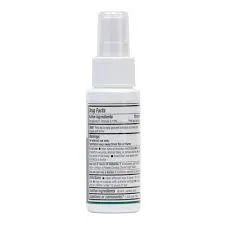flocculants used in water treatment
Flocculants are essential chemical agents used in water treatment processes to enhance the removal of suspended solids and impurities from water. These substances work by facilitating the aggregation of particles, allowing them to form larger clumps or flocs, which can then be easily removed through sedimentation or filtration. Understanding the various types of flocculants and their applications is crucial for optimizing water treatment strategies.
The primary types of flocculants used in water treatment include organic and inorganic compounds. Organic flocculants, such as polyacrylamides, are synthetic polymers that can effectively reduce turbidity by increasing the size of suspended particles. These compounds are favored for their efficiency in various water conditions, including both low and high turbidity waters. They can be tailored to specific applications depending on their molecular weight and charge density, enabling more precise control over the flocculation process.
On the other hand, inorganic flocculants, such as aluminum sulfate (alum) and ferrous sulfate, have been utilized for many years in municipal water treatment facilities. These compounds work by destabilizing the charged particles in water, allowing them to aggregate and precipitate. Although inorganic flocculants are effective and cost-efficient, they can also introduce residual metal ions into the treated water, which may need to be addressed through additional treatment steps.
The choice of flocculant is influenced by several factors, including the type and concentration of contaminants present in the water, the desired quality of the treated water, and regulatory requirements. For instance, in industrial settings where heavy metal contaminants are prevalent, specific flocculants may be employed to target these pollutants effectively. Similarly, in drinking water treatment, the flocculants used must comply with health and safety regulations to ensure consumer safety.
flocculants used in water treatment

The application of flocculants extends beyond just drinking water treatment. They are also used in wastewater treatment processes, where their role is critical in removing organic matter, nutrients, and microorganisms. Flocculants can enhance the efficiency of anaerobic digesters in reducing sludge volume and improving overall biogas production. Moreover, in the mining industry, flocculants are used to separate valuable minerals from waste materials, contributing to more sustainable practices.
The effectiveness of flocculants can be influenced by environmental factors such as pH, temperature, and the presence of competing ions. Therefore, ongoing research is focused on developing new and improved flocculants that are not only effective but also environmentally friendly. Biodegradable flocculants, derived from natural sources like starches and vegetable gums, are gaining traction as a sustainable alternative to traditional synthetic options.
In conclusion, flocculants play a pivotal role in water treatment processes, significantly improving the clarity and safety of water. Their diverse applications across various industries highlight their importance in environmental management and sustainability efforts. As the demand for cleaner water continues to rise, advancements in flocculant technology will be crucial in meeting regulatory standards and protecting public health. The future of water treatment undoubtedly hinges on the continued innovation of these vital chemical agents.
-
Water Treatment with Flocculant Water TreatmentNewsJun.12,2025
-
Polymaleic AnhydrideNewsJun.12,2025
-
Polyaspartic AcidNewsJun.12,2025
-
Enhance Industrial Processes with IsothiazolinonesNewsJun.12,2025
-
Enhance Industrial Processes with PBTCA SolutionsNewsJun.12,2025
-
Dodecyldimethylbenzylammonium Chloride SolutionsNewsJun.12,2025





